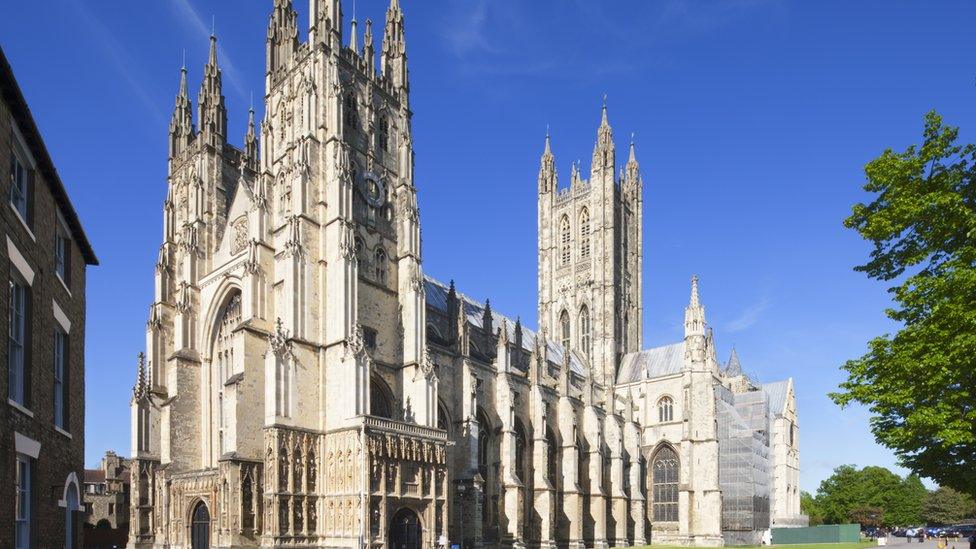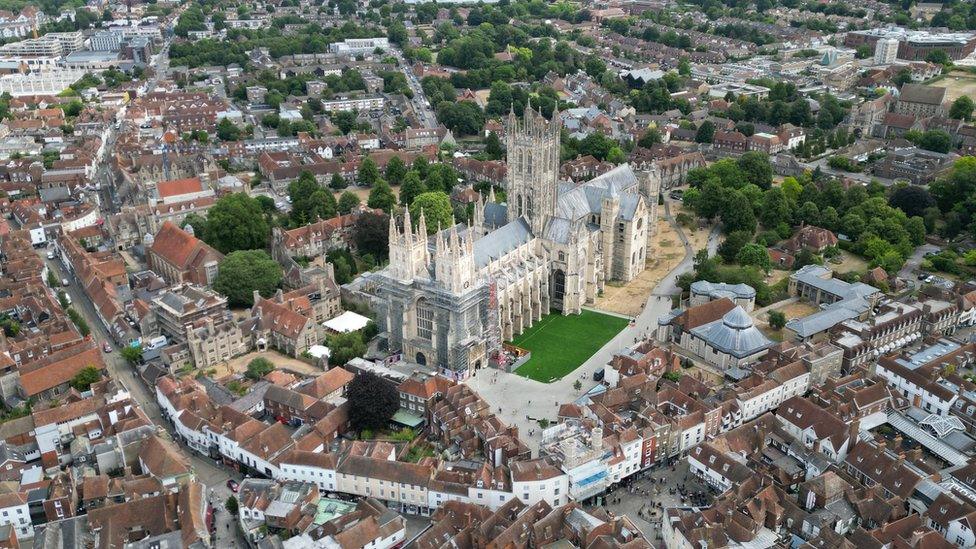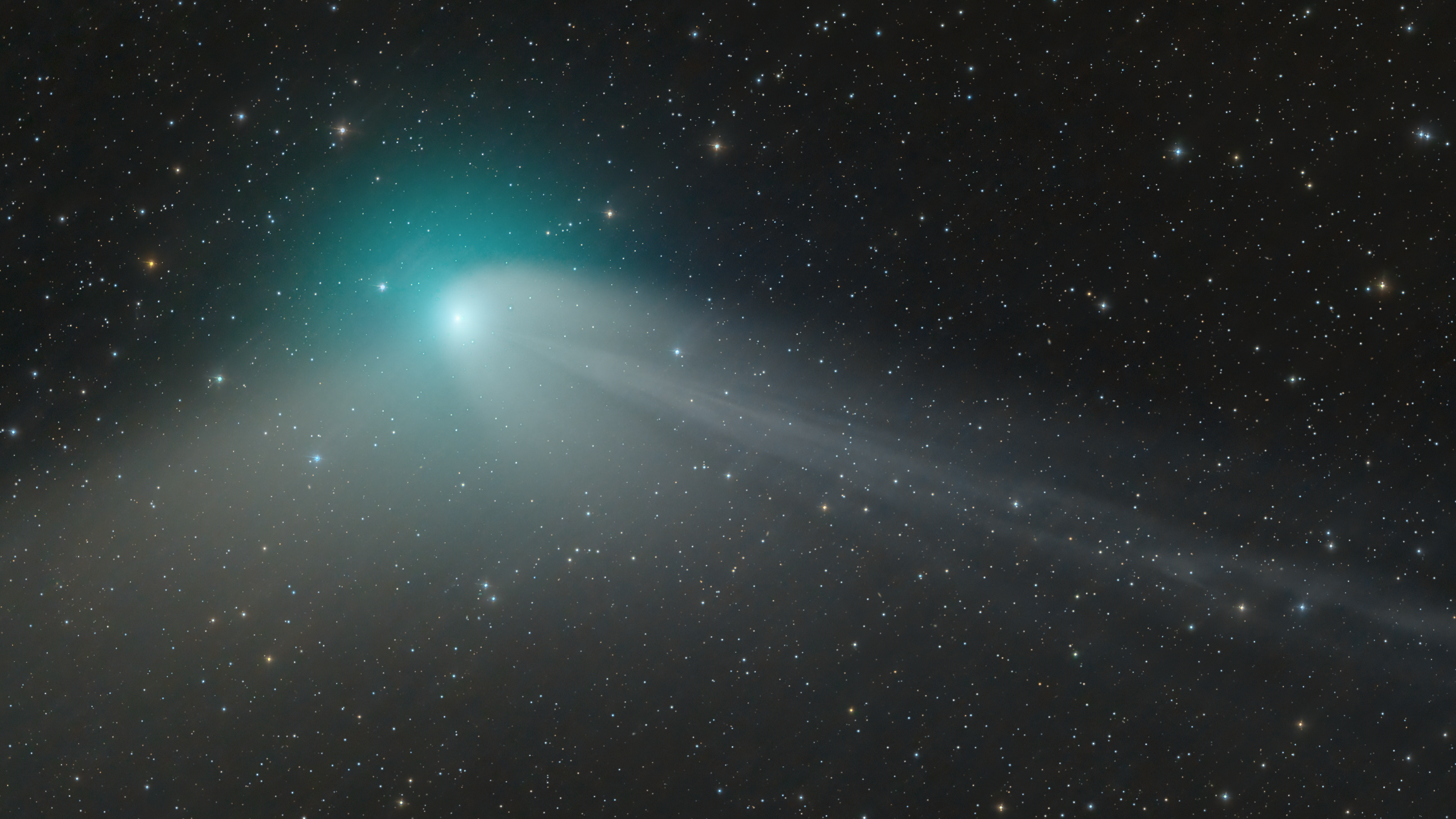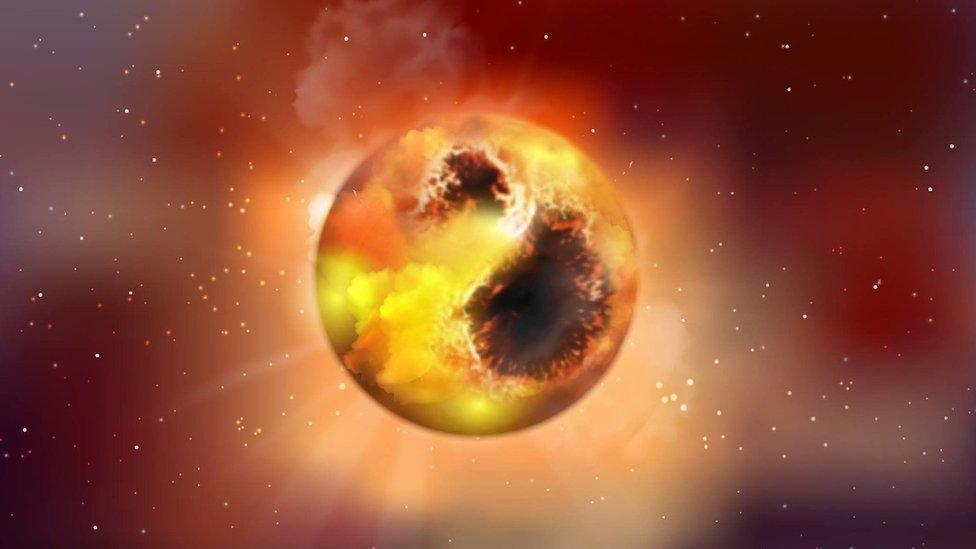Canterbury: Scientists search cathedral roof for cosmic dust
- Published

Scientists are hoping to find answers to the origins of the solar system on the roof of Canterbury Cathedral
Scientists are taking to the roof of Canterbury Cathedral to search for matter from space.
Members of the School of Physics and Astronomy from the University of Kent are hoping to find micrometeorites - dust sized particles which have made it through the earth's atmosphere.
The cathedral has been chosen because of the roof's inaccessibility.
It is hoped any material gathered could provide information about the origins of the solar system.
Scientists had previously searched for cosmic dust, which mainly come from comets and asteroids, in remote locations such as Antarctica or ocean floors.
The UK's cathedrals are now being explored because of their age, size and detailed records of construction and maintenance work.
Canterbury Cathedral was founded by St Augustine in 597 AD,

Cosmic dust has been gathering on the cathedral roof since it was built
Dr Penny Wozniakiewicz, one of the scientists leading the project in Canterbury, said: "You want the site as undisturbed as possible.
"The dust is coming in everywhere, but the rooftops offer an opportunity to collect the dust and not have people trampling all over it."
The team plan to extend their work to Rochester Cathedral in Kent, then on to other cathedrals around the UK.

Follow BBC South East on Facebook, external, on Twitter, external, and on Instagram, external. Send your story ideas to southeasttoday@bbc.co.uk, external.
- Published1 February 2023

- Published29 June 2020

- Published19 March 2012

- Published22 July 2010